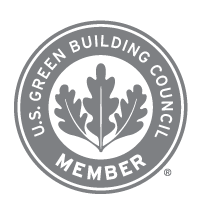Asphalt Pavement Surface Treatments
Category: Blog Articles By: Ken Holton, P.E.
What comes to mind when you hear the words asphalt surface treatments?
The term asphalt surface treatments is used to cover a vast range of materials that are typically surface coatings made up of materials using asphalt emulsions and often-times a combination of asphalt emulsions and aggregates.
Typically, these materials are placed in a thin layer on the surface of roadways that have been previously constructed with hot mix asphalt and Portland cement concrete. As a topical treatment, asphalt surface treatments do not change the molecular composition of pavements; but they can serve a variety of useful functions. For a review of such treatments, please see Dave Helm’s blog on that subject.
In contrast to providing a surface covering for pavements, Maltene Replacement Technology (MRT) deeply penetrates into asphalt, reintroducing to it the maltene fractions of asphalt cement. A concrete sealer would be a similar preservation material for Portland cement concrete, but for the remainder of this article we will stick with asphaltic cement pavements.
Properly formulated and constructed surface treatments are expected to add value and life to the pavement by being both economical and long lasting. Such materials have a rapid construction time and are expected to add years to a road pavement’s useful life.
Unlike topical sealers, MRT extends the service life of the pavement by modifying the asphalt binder’s rheology, increasing penetration values while decreasing viscosity and corresponding DSR (Dynamic Shear Rheometer) values. By improving the molecular structure of the asphalt binder, MRT-treated roadways remain as flexible and adhesive as they were originally designed to be for a longer time. In contrast, surface coating treatments are typically designed to seal, and in many cases, operate as a sacrificial layer from wear and tear.
It might be helpful to consider road surface treatments thrifty maintenance techniques. The primary question to ask yourself is what are you trying to achieve?
Here are some possible answers to that question:
- To resist abrasion possibly due to winter conditions
- To provide a new wearing surface
- To seal and protect from the elements
- To provide an attractive black appearance
- To provide a short-term stop-gap strategy for deteriorated pavements
Once your goal has been identified, the appropriate asphalt surface treatment tool becomes more apparent. In general, it can be said that the thinner the layer, the shorter the life of the product. By taking the cost of a particular surface treatment and dividing it by the life of the material you can determine the annual cost of using that maintenance tool. Be aware: some surface treatments cost as much as the hot mix asphalt per year of service.
An MRT surface treatment extends the life of the hot mix asphalt from the inside out. It also provides a sealing effect, keeping water and the elements out. Keep in mind that to achieve a penetrating rejuvenation of the asphalt binder there can be no asphaltene content in the emulsion you are using. When asphaltenes are present, the maltenes will bond with them rather than penetrating the surface to replace the depleted maltenes.
Since alternative asphalt surface treatments reside on the surface of the pavement, eventually weathering or abrasion will remove them. Some coatings last only a few months to a year while other surface treatment are able to last several years.
Make sure to do your cost analysis and understand clearly the reasons for doing any asphalt surface treatment. Do your homework and you will be able to find long-term programs with proven results. Wisdom comes from following guidance from other pavement owners with years of experience. So shorten your learning curve, do the research and move forward with confidence that you’ve chosen the right surface treatment for your road maintenance objectives and your budget.







